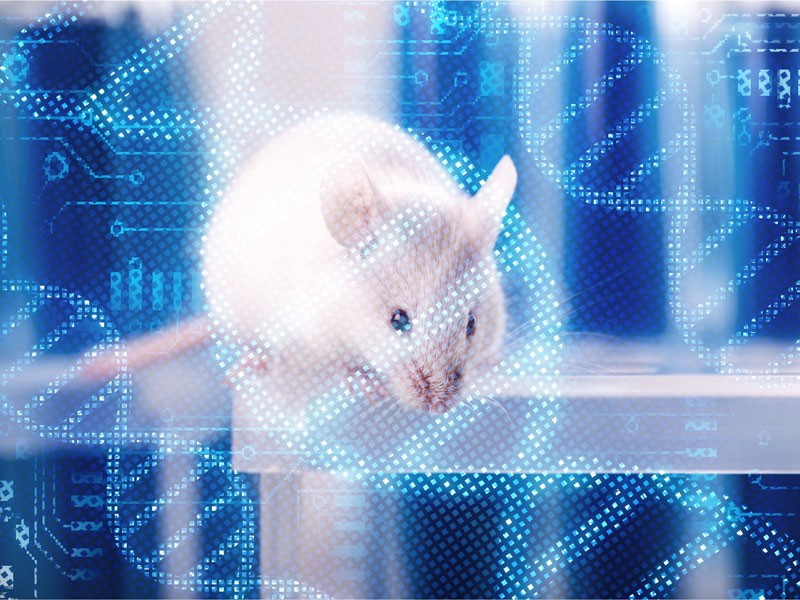- Luật
- Hỏi đáp
- Văn bản pháp luật
- Luật Giao Thông Đường Bộ
- Luật Hôn Nhân gia đình
- Luật Hành Chính,khiếu nại tố cáo
- Luật xây dựng
- Luật đất đai,bất động sản
- Luật lao động
- Luật kinh doanh đầu tư
- Luật thương mại
- Luật thuế
- Luật thi hành án
- Luật tố tụng dân sự
- Luật dân sự
- Luật thừa kế
- Luật hình sự
- Văn bản toà án Nghị quyết,án lệ
- Luật chứng khoán
- Video
- NGHIÊN CỨU PHÁP LUẬT
- ĐẦU TƯ CHỨNG KHOÁN
- BIẾN ĐỔI KHÍ HẬU
- Bình luận khoa học hình sự
- Dịch vụ pháp lý
- Tin tức và sự kiện
- Thư giãn

TIN TỨC
fanpage
Thống kê truy cập
- Online: 223
- Hôm nay: 198
- Tháng: 1621
- Tổng truy cập: 5245625
A potentially major breakthrough in anti-aging medicine
A pre-print study reveals that young blood plasma given to older mice reduced aging by an average of 54% across multiple tissues; and had an impact on other signs of aging, such as cellular senescence, fat accumulation, and behavioural measures.

"I believe major rejuvenation has been achieved in a mammal, using a relatively benign intervention that shows promise of scaling up to humans. I'm going to stake my reputation on it."
So says Josh Mitteldorf, Ph.D., theoretical biologist and longevity expert, commenting on the results of a new paper that recently appeared on bioRxiv. While yet to be peer-reviewed and published, the study has generated a flurry of discussion among the scientific community.
David Sinclair, Ph.D., a leading anti-aging researcher at Harvard, is similarly excited by this study, as he tweets: "The result is so literally incredible that even the first author, Prof. Steve Horvath, didn't believe it at first. I suggested he check if the rats were mixed up, but he assured me he checked their genomes. The rats weren't mixed up and the data is the data."
Neither Mitteldorf nor Sinclair were involved in the work themselves – but the unusually strong praise from them and others in the field of aging suggests that this could be a major, landmark breakthrough in rejuvenation medicine.
Young blood plasma is already known to confer beneficial effects on various organs in rodents. However, it was not known whether young plasma rejuvenates cells and tissues at the epigenetic level.
In biology, an epigenetic clock is a highly accurate test for measuring both biological and chronological age, based on precise DNA methylation levels at hundreds of sites across the genome. Methyls, which are added and subtracted from our DNA over time, control which genes remain on/off. The aging field is embracing the idea that changes to these methyl patterns and other gene regulators are a part of the aging process, and that it can be reversed.
This new study tested whether a mix of plasma fractions from young rats affected the epigenetic clock in old rats. A total of 18 rats were split into three groups: six young rats (30 weeks old), six old rats (109 weeks old) and six old rats (a control group, also 109 weeks old). After treatment with only four injections, reversal of tissue ages in older rats according to the epigenetic clock was: liver 75%, blood 66%, heart 57%, hypothalamus 19%. This provided an average for all four regions of 54%.
In other words, the treatment reversed a majority (>50%) of the aging. It would seem that Aubrey de Grey's prediction made back in 2008 – and featured on our timeline for 2020 – is now coming true.
"Crucially, plasma treatment of the old rats [109 weeks] reduced the epigenetic ages of blood, liver and heart by a very large and significant margin, to levels that are comparable with the young rats [30 weeks]," writes the team, whose authors include Steve Horvath (University of California, Los Angeles), known as the original creator of the epigenetic clock. He provided the statistical analysis needed to develop a set of methylation clocks specialised to rats.
Besides the DNA methylation, other marks of rejuvenation are noted in the paper:
• Senescent cells (which have stopped dividing, but continue to accumulate and damage the body) were reduced "by a very considerable degree"
• Antioxidants (which can prevent damage to cells caused by free radicals) were boosted to higher youthful levels
• IL-6 (a marker of inflammation) was restored to low youthful levels
• Triglycerides (a type of lipid found in blood and part of total cholesterol level) were brought down to youthful levels
• HDL cholesterol rose to youthful levels
• Blood glucose fell toward youthful levels
• Cognitive function in treated rats (tested using Barnes maze) resulted in scores better than old rats (though not as good as young rats)
Further research will likely attempt to replicate these findings, with experiments to yield even better improvements to rodent healthspan, in the hope of identifying the exact constituents of plasma that are having the strongest effects.
Perhaps when the molecules have been isolated, human trials could follow. In the longer term, a form of synthetic plasma may be reverse-engineered and manufactured at scale, without requiring extraction from the blood of live subjects, rodent or human. One day, in the not-too-distant future, such a therapy could become a standard medicine produced in the laboratory for older people.
The previous paragraph is speculation, of course. This study involved only a small number of rats, the research is still at an early stage and many questions need to be answered. Why, for example, did the hypothalamus yield a lower result than other regions? Is there a central "aging clock", perhaps in the hypothalamus, remotely coordinating the methylation state of tissues – or is the epigenetic age mechanism dispersed more widely throughout the body? For now, though, the results of this paper are surely the most exciting breakthrough in anti-aging medicine ever to be covered on the Future Timeline blog.
"If this finding holds up, rejuvenation of the body may become commonplace within our lifetimes, able to systemically reduce the risk of the onset of several diseases in the first place or provide resilience to a wide variety of infections," concludes Sinclair.
By Futuretimeline.net
Các bài viết khác
- Từ sự kiện Tổng biên tập báo TIME Greta Thunberg là Nhân vật của năm 2019 đến báo cáo Biến đổi khí hậu Phúc trình của IPCC báo động đỏ cho nhân loại 82021 (15.01.2020)
- Từ trường Trái Đất đang suy yếu (28.05.2020)
- Đằng sau Việt Nam được (28.05.2020)
- Biến động nhà đất 4 năm mới gặp, bắt đáy hay găm tiền chờ giảm giá? (28.05.2020)
- 2 kịch bản tăng trưởng kinh tế 2020 ra sao? (28.05.2020)


















































 Yahoo:
Yahoo: 